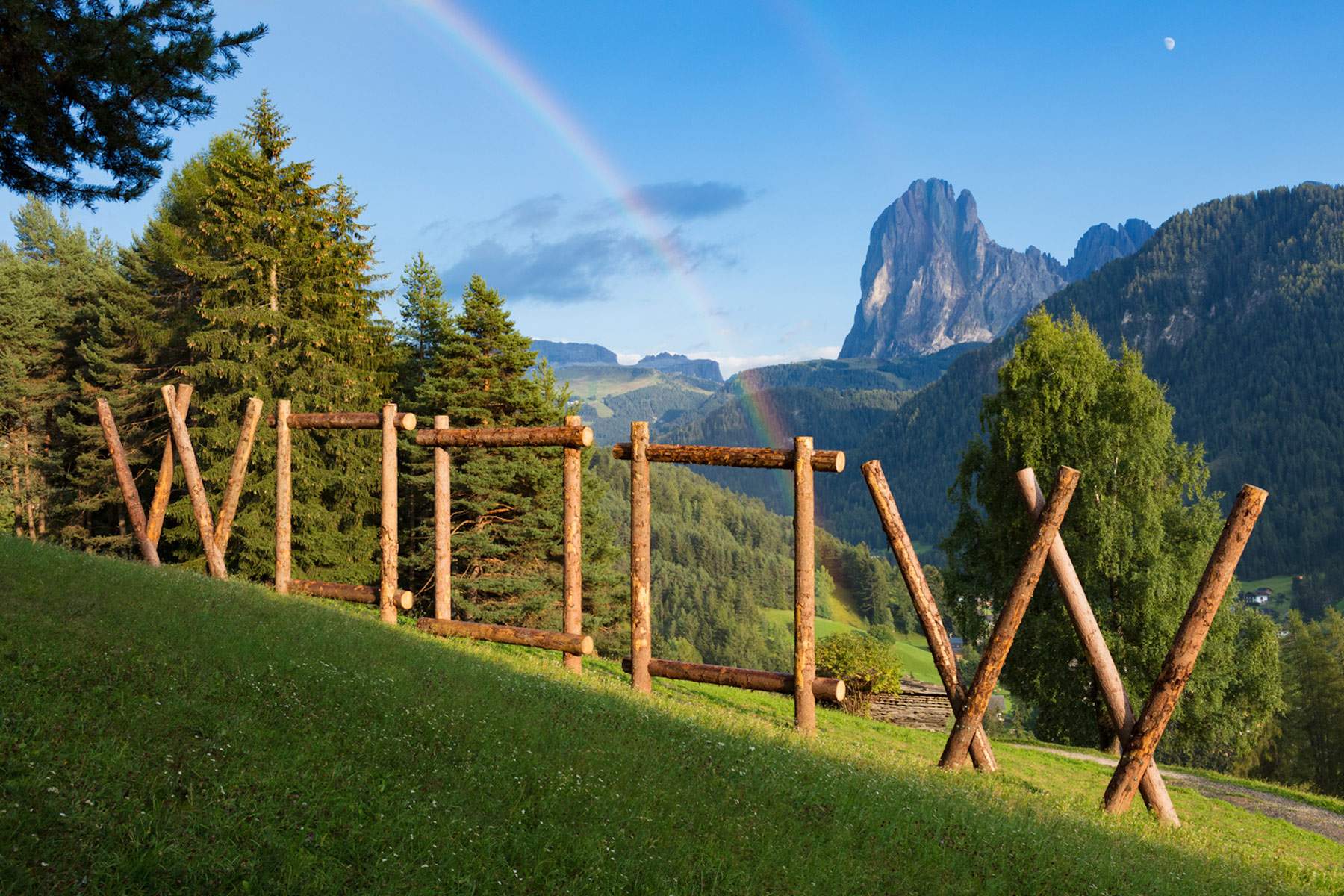Culture and nature to create new worlds: these are the themes of the 7th Biennale Gherdëina in Ortisei
It will begin on August 8 and end on October 20, 2020, the seventh edition of Biennale Gherdëina, the international art exhibition held every two years in the public space of Ortisei, Val Gardena (Bolzano). The opening was originally scheduled for June 26, but the coronavirus caused the dates to be pushed back: however, the Zënza Sëida association, the Biennale staff and its curator Adam Budak decided to start it anyway, adapting it to current conditions: art, in fact, can make an important social contribution even in times of uncertainty, and the goal is therefore also to give a positive and hopeful signal, reaffirming the key role that contemporary art plays in a changing culture.
The theme of this edition of the Biennale Gherdëina is A breath? a name? The ways of worldmaking (“A breath? A name? How to make new worlds”), and sees a significant poetic turn toward the basic vital needs of human interaction, such as the act of breathing and the desire to name objects. Thus, the creation of new worlds is examined in the most pressing needs of human beings, embedded in a natural environment and social context.
Adam Budak, in his third Gherdëina Biennale (he curated the 2016 one, From Here to Eternity, and the 2018 one, Writing the Mountains), concludes this year the series of ambitious projects that have given the entire event international relevance in recent years. In the 2020 edition, the thematic areas addressed so far (the significance of cultural heritage, the search for strategic positioning in history, theimportance of the concept of "community," the omnipresence of nature and its “industry”) will be contextualized in a socio-political framework that will not neglect the more poetic, spiritual, and existential aspects. As in previous editions, an important role will be played by the complexity of the Ladino language, and the event will return to address the continuity and persistence of traditions, always taking into account the need to reinterpret, question and potentially transform them.
Focus of this year’s Biennial will be the meaning and awareness of socio-political relevance in the process of creating theworld (Worldmaking), the dynamic factor within this process, but also the resilience that culture and nature provide. This is an emancipatory process that responsibly and forward-lookingly takes into account the historical uniqueness of place, which has developed here into a mature and courageous vision of the future. There are three chapters on the sociology of encounter and the strategies of plurality that will form the original core of the making of new worlds(Ways of the worldmaking): Ecology of others , dedicated to the revival of relationality (following Philippe Descola’s reflection on the nature-culture link), In praise of hands (on the art of touch: a chapter strongly inspired by Henri Focillon’s dream of the autonomy of art with respect to materials, techniques, and signs), and finally The cloud of possibles, on the diffusion of enthusiasm and the power of differentiation (referring to what Maurizio Lazzarato calls “the shift from a capital-labor to a capital-life relationship”).
Responsibility and humility are the approaches that unite all three chapters, in an attempt to master the greatest challenges of the active Worldmaking process, with responsiveness and focus. The Biennale Gherdëina 7 consists of a main exhibition in the public space of Ortisei in Val Gardena and the surrounding villages, an exhibition space in the Luis Trenker Hall in the center of Ortisei, specially adapted for the Biennale, as well as a series of collateral events that will also be made available online via streaming.
Here are the artists who have been invited to participate in the seventh edition: Agnieszka Brzeżanska (Poland), Brave New Alps (Italy), Carlos Bunga (Portugal), Pavel Büchler (Czech Republic), Josef Dabernig (Austria), Aron Demetz (Italy), Habima Fuchs (Czech Republic), Henrik Håkansson (Sweden), Petrit Halilaj and Alvaro Urbano (Kosovo-Spain), Ingrid Hora (Italy), Paolo Icaro (Italy), Hans Josephson (Switzerland), Lang/Baumann (Switzerland), Tonico Lemos Auad (Brazil), Kris Lemsalu (Estonia), Sharon Lockhart (USA), Myfanwy Macleod (Canada), Antje Majewski (with Pawel Althamer, Alioune Diouf, Cecilia Edefalk, Pawel Freisler, Gregor Prugger u. a.) (Germany), Marcello Maloberti (Italy), Franz Josef Noflaner (Italy), Paulina OÅ‚owska (Poland), Pakui Hardware (Lithuania), Maria Papadimitriou (Greece), Hermann Josef Runggaldier (Italy), Marinella Senatore (Italy), Paloma Varga Weisz (Germany). For all information you can visit the Biennale Gherdëina website.
Pictured is a work from the past edition: Claudia Comte, WOOOW (2018)
 |
| Culture and nature to create new worlds: these are the themes of the 7th Biennale Gherdëina in Ortisei |
Warning: the translation into English of the original Italian article was created using automatic tools. We undertake to review all articles, but we do not guarantee the total absence of inaccuracies in the translation due to the program. You can find the original by clicking on the ITA button. If you find any mistake,please contact us.




























